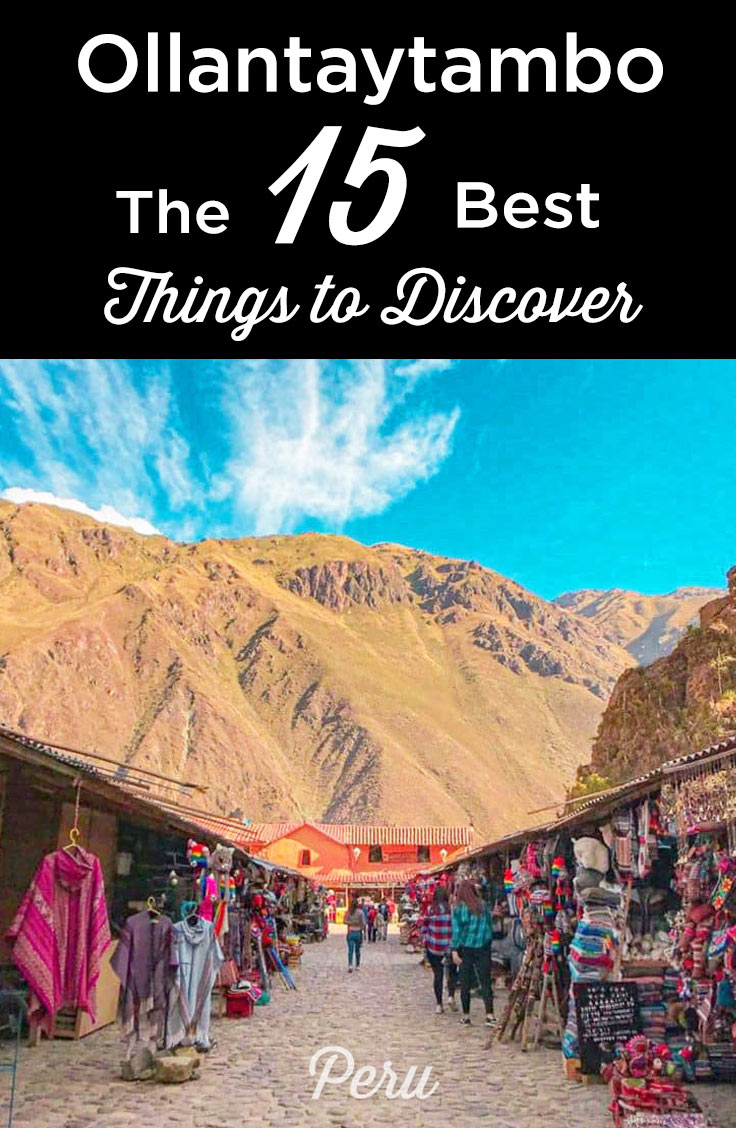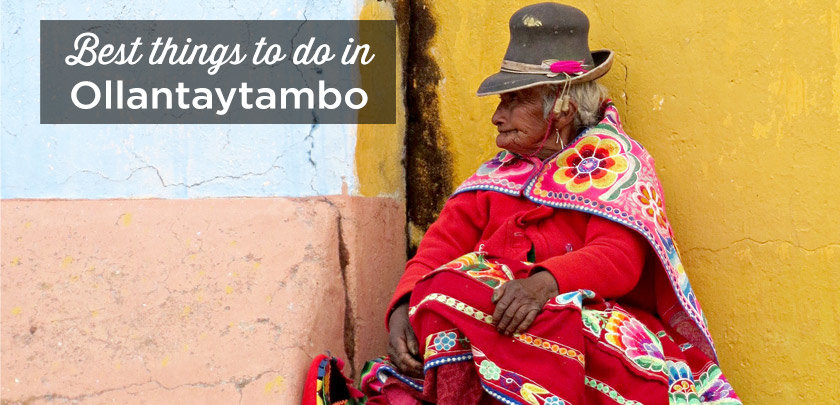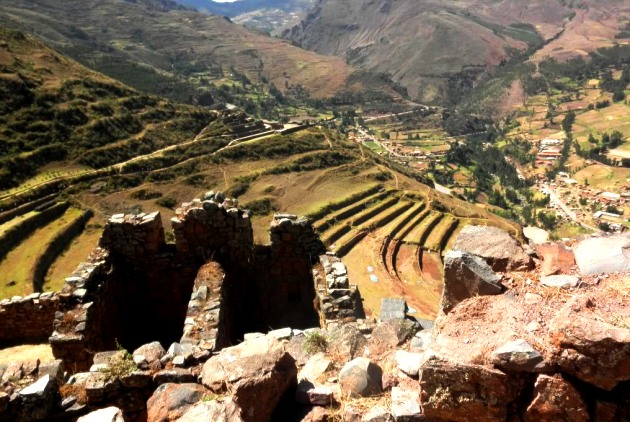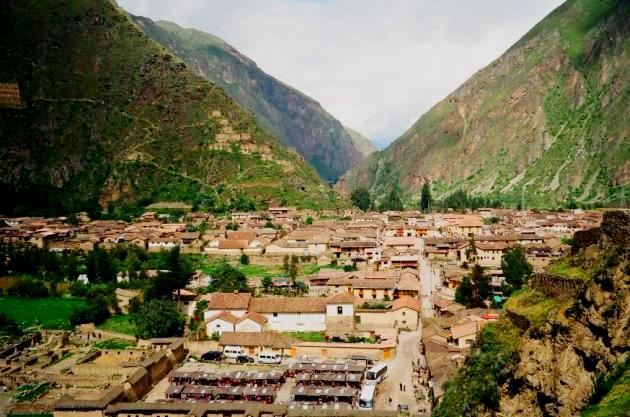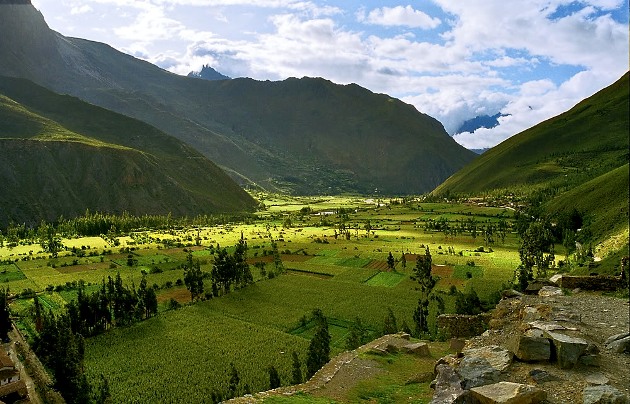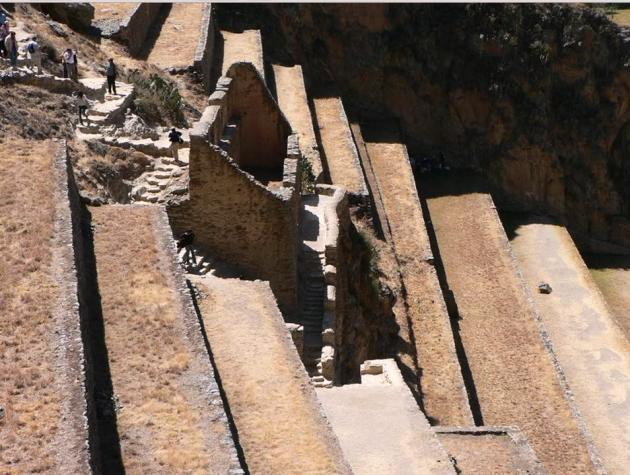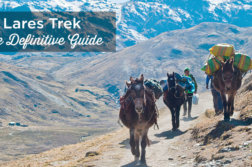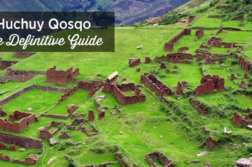How to visit Ollantaytambo: The Definitive Guide
In the heart of the Sacred Valley of the Incas, about 37 miles from Cusco, lies Ollantaytambo — a town that once played a key role during the Inca Empire.
Today, Ollantaytambo is one of the top places to visit in the Sacred Valley, not only for its impressive history and charm, but also because it’s home to the train station that connects travelers to Aguas Calientes, the gateway to Machu Picchu.
To help you plan your visit, I’ve put together this guide to the best things to do in Ollantaytambo, along with my favorite restaurants, hotel recommendations for every budget, and plenty of practical tips.
What are the must-see sites? Where’s the best place to stay? Here’s everything you need to know!
Sommaire
- How to visit Ollantaytambo: The Definitive Guide
- What Is Ollantaytambo and Why Is It Famous?
- Best Things to Do in Ollantaytambo
- 1. Visit the Ruins of Ollantaytambo
- 2. The market of Ollantaytambo
- 3. Strolling through the streets of Ollantaytambo
- 4. The Pinkuylluna
- 5. ALQA Museum
- 6. Inka House
- 7. Pachamanca Experience
- 8. The Ñaupa Church: Inca ruins without tourists
- 9. Sun Gate (Intipunku)
- 10. Perolniyoc Waterfalls
- 11. Quellorakay
- 12. The pre-Inca site of Pumamarca
- 13. Yanacocha Lagoon
- 14. Chocomuseo
- 15. Have a Craft Beer
- Ollantaytambo and the Other Must-Sees of the Sacred Valley
- Is Ollantaytambo a Good Starting Point for Machu Picchu?
- Staying in Ollantaytambo
- Staying in Cusco
- Where to eat in Ollantaytambo
- How to get to Ollantaytambo from Cusco
- What is the best time to visit Ollantaytambo?
- Book Your Flight at the Best Price
- Rent a Car in Peru
- Traveling to Peru? These articles will help you!
What Is Ollantaytambo and Why Is It Famous?
During the Inca Empire, Ollantaytambo was not only a major crossroads where several Inca routes converged, but also a strategic control point on the road leading to the famous Machu Picchu.
At the time of the Spanish conquest, Ollantaytambo became the residence of Manco Inca Yupanqui, leader of the Inca resistance, who fortified the town and its surroundings after Cusco fell to the conquistadors.
Today, Ollantaytambo is not only an important departure point to Machu Picchu thanks to its train station, but also a destination famous for its impressive ruins, traditional Andean market, and ancient agricultural terraces.
It’s also home to the remarkable Temple of the Sun, a masterpiece of Inca architecture, and one of the few places where you can still see a well-preserved Inca urban layout with irrigation canals that are still in use today.
Best Things to Do in Ollantaytambo
1. Visit the Ruins of Ollantaytambo
The fortress of Ollantaytambo was a military, religious, and political center, as well as a key stronghold of resistance against the conquistadors, led by Inca Manco Inca Yupanqui.
It’s an important site in the history of Peru and remains the must-see attraction of Ollantaytambo today.
The ruins are worth visiting not only for their historical significance but also for the stunning panoramic views of the Sacred Valley’s high green mountains.
You’ll see impressive agricultural terraces and buildings such as the Temple of the Sun, built with the same large, perfectly interlocking stone blocks found at Machu Picchu and Coricancha in Cusco.
Another emblematic spot is the Baño de la Ñusta, where the Inca princesses are believed to have bathed for purification — and where the water still flows today!
Schedules and Prices to Visit the Archaeological Site of Ollantaytambo
The site is open daily from 7:00 am to 5:30 pm.
You’ll need a Tourist Ticket to enter.
You can purchase it here by selecting the option that suits your needs (1, 2, or 10 days):
How Long Does It Take to Visit the Ruins of Ollantaytambo?
Plan to spend about 2 hours exploring the ruins, including the agricultural terraces and the Temple of the Sun.
Is It Possible to Visit Ollantaytambo Without a Guide?
Yes, you can visit Ollantaytambo without a guide. However, to better understand the site’s history and significance, I recommend hiring a local guide.
2. The market of Ollantaytambo
The handicraft market, located right next to the ruins, is Ollantaytambo’s tourist market.
It is a colorful market, ideal for buying souvenirs such as alpaca wool fabrics or handmade jewelry.
If you want to get a glimpse of local life and see where the locals buy their daily products, head to the food market, next to the main square.
Here you will find fresh produce and Andean specialties: tubers such as olluco and mashua, fruit, cheeses, bread, potatoes, juices and much more.
They are two completely different places, don’t confuse them 😉
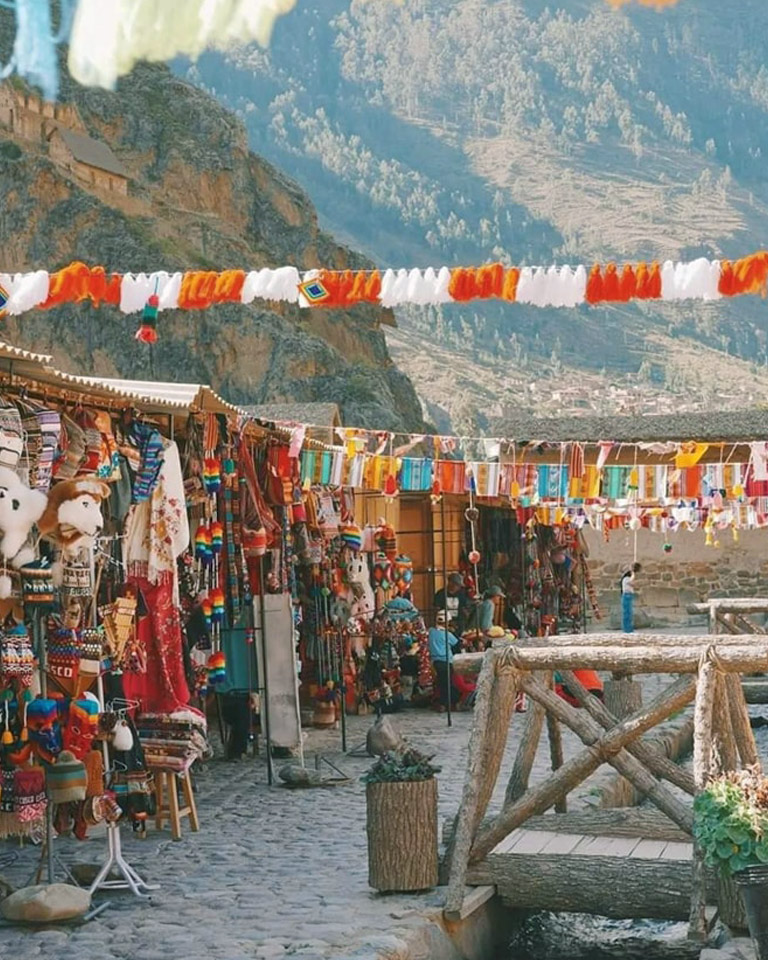
3. Strolling through the streets of Ollantaytambo
Ollantaytambo has preserved the same streets and houses as in the time of the Inca Empire, which gives it a unique charm.
With its narrow cobblestone streets, beautiful squares and traditional atmosphere, you get the impression that time has stood still here.
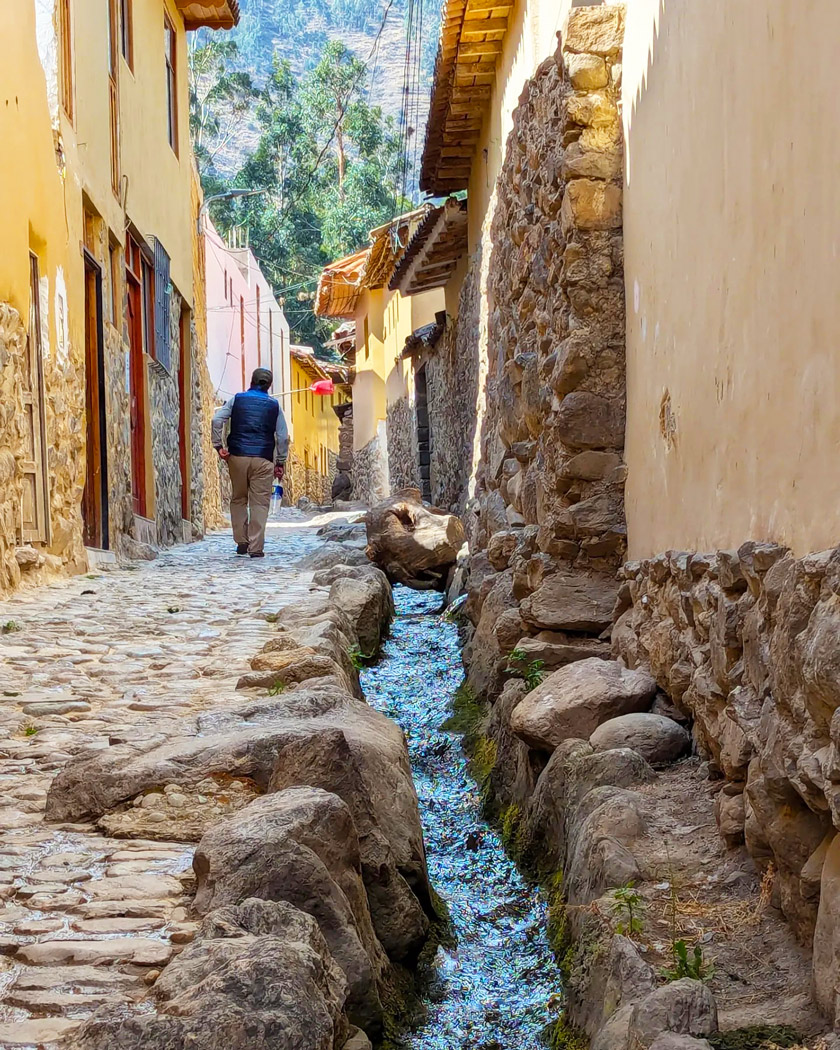
4. The Pinkuylluna
Everyone rushes off to the tourist ruins, but they forget that there is a free Inca site little known to travelers: Pinkulluna, which I think is a must-see in Ollantaytambo!
It is a set of Inca agricultural warehouses located in the middle of a cliff. The climb is quite steep, but quite short (between 20 and 30 minutes) and offers a magnificent view of the village and the fortress.
How to get to Pinkuylluna:
- On the first street before the Ollantaytambo square, turn right (in the opposite direction of the market).
- Follow this cobblestone street and you will find an open gate leading to the mountain, stone steps and a sign that says “Pinkuylluna – visiting hours from 7.00 a.m. to 4.30 p.m.”.

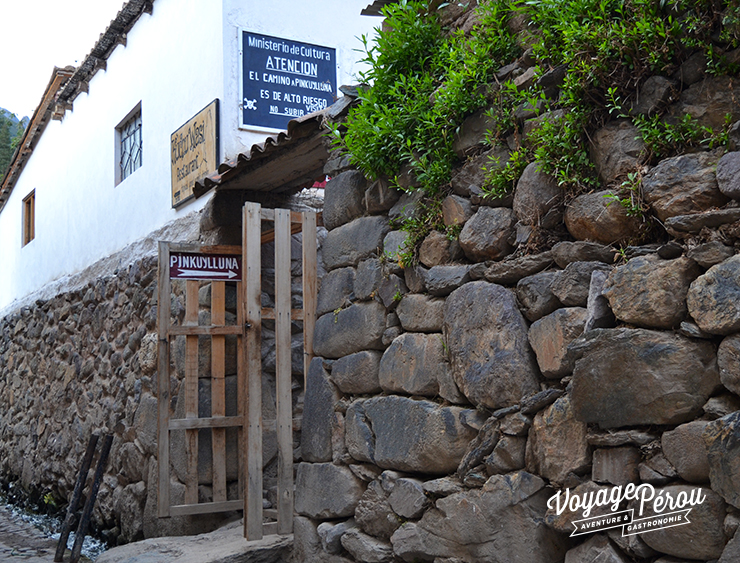
5. ALQA Museum
this is one of my favorite places in Ollantaytambo!
ALQA Museo, or Gallery of Andean Expressions, is a unique place that celebrates the traditions of Andean communities.
This art gallery brings together Andean cultural artifacts, textiles, masks, books, maps and many other objects. Over time, it has expanded to include a cafeteria, wine bar and restaurant.
ALQA also organizes various cultural events, such as contemporary art exhibitions, music concerts, documentary screenings and other activities,
It’s a great place to simply enjoy a coffee in the beautiful garden, but if you’re on a budget, I highly recommend eating in the restaurant, whose menu includes Andean ingredients and local ancestral knowledge.
- Address: Sipas Calle, Ollantaytambo, Peru – see here on map
- ALQA Museum Instagram
- ALQA Restaurant website
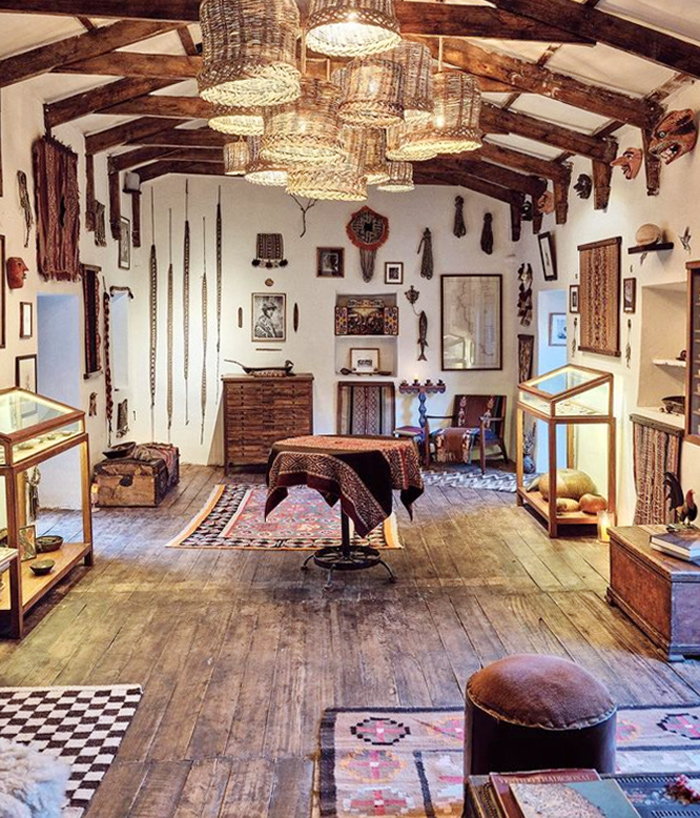
6. Inka House
The Inka House is a small family museum located in a traditional Andeanadobe and thatched roof house.
Created to preserve the memory of its inhabitants, it tells the story of the Inca culture through its objects, utensils and ancestral traditions.
The project was born from the desire of José’s grandfather, the founder, to share this unique heritage with visitors to the Sacred Valley.
Visitors can learn about the cultural importance of guinea pigs in Andean life, their breeding and culinary preparation.
It is a wonderful moment of exchange, rare in tourist centers, and it must be said that this is a hidden address where few travelers stop!
- Free admission
- Open daily from 9 a.m. to 6 p.m
- Chaupi Street, Ollantaytambo – see here on the map
7. Pachamanca Experience
At El Albergue you can experience Pachamanca, a pre-Hispanic cooking method in which food is cooked over hot stones in a clay oven.
The experience includes a visit to the farm, the vegetable garden, the cañazo distillery and the coffee roastery, before helping to prepare the meal.
The menu includes chicken, pork and lamb, accompanied by Andean potatoes, sweet potatoes, organic vegetables, house salad and chicha morada.
All served on picnic tables with views of the mountains and Inca sites.
For me, this is one of the best things to do in Ollantaytambo, as it is the perfect mix of conviviality, learning and… good food! good food!
In addition to the Pachamanca, El Albergue offers 2 other experiences:
- Distillation workshop, where you create your own bottle of cañazo (sugar cane brandy) with aromatic plants collected in situ, which you bottle, personalize and take home as a souvenir
- Roasting activity, where you will learn all about the production process, roast coffee from the Sacred Valley and bottle it to take it home
I suggest you contact them in advance to book the experience you are interested in: lahuerta@elalbergue.com
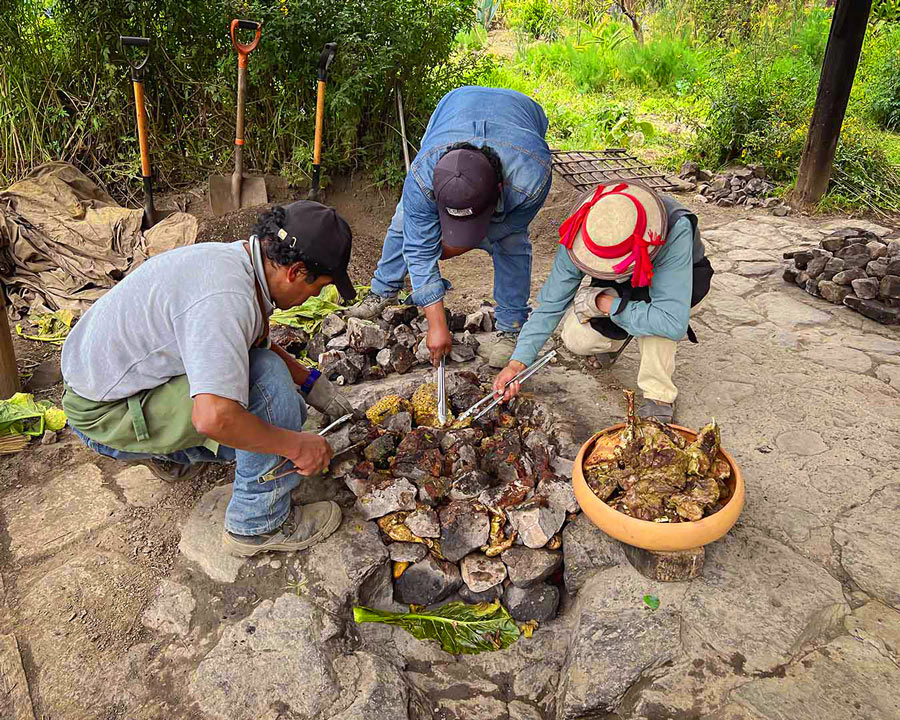
8. The Ñaupa Church: Inca ruins without tourists
Hidden in the mountains of Ollantaytambo, the Ñaupa Iglesia is one of my favorite places in the valley.
The Ñaupa Iglesia is an ancient Inca temple. Its name means “the old temple” in Quechua. It was a ceremonial center where rituals dedicated to the Moon, the Sun, the Apus , the gods of the mountains, and the mallquis , the mummies of the ancestors, were celebrated.
It is easy to understand why this place was chosen: it is hidden high in the mountains and it is magnificent.
The fantastic thing about this place is that it is not only impressive, free and free of tourists, but the way to get there is very pleasant and quite easy.
What can you find here?
- inca terraces
- stairs
- doors carved in the walls
- chakanas”, Andean crosses and other elements referring to Inca cosmology
- seats carved in stone
- niches (which probably housed mummies)
- an altar in a cave used for observing the stars
- and other elements still unknown
How to get to the Ñaupa Church:
- First get to Pachar: from Ollantaytambo market, take a colectivo (1 sol/person, less than 10 min trip, don’t forget to indicate that you get off in Pachar: “bajo Pachar” or “bajo puente”
- Cross the bridge in front of you and head left, towards the village. Follow the road through the corn fields.
- When you reach the main square with its two beautiful chapels, take the path on the far right.
- You will come to a bridge, so don’t cross it. Instead, take the dirt road on your left, which skirts the river and the railroad.
- Follow the path. After going slightly uphill and then down again, the path widens: you have to follow the railroad tracks. Check that the train is out of sight, even if it is only a few meters. You will find on your right a path that goes up to the terraces of the Ñaupa Iglesia.
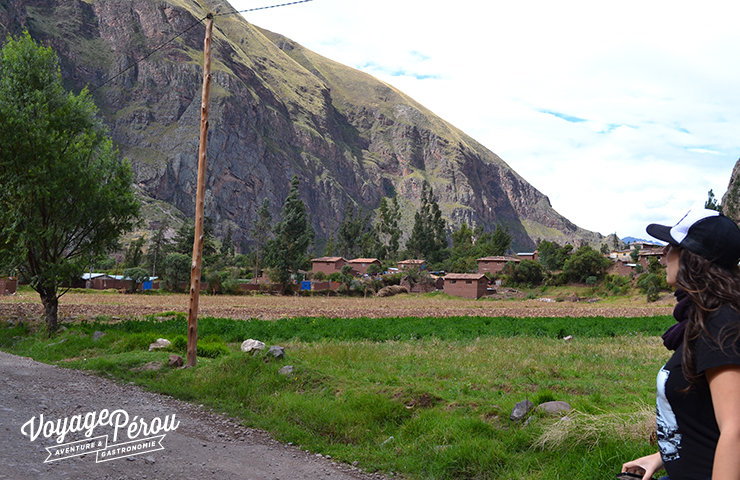
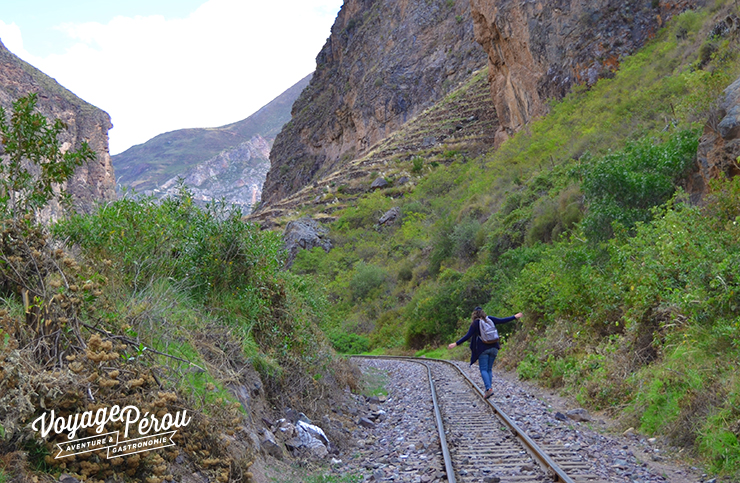
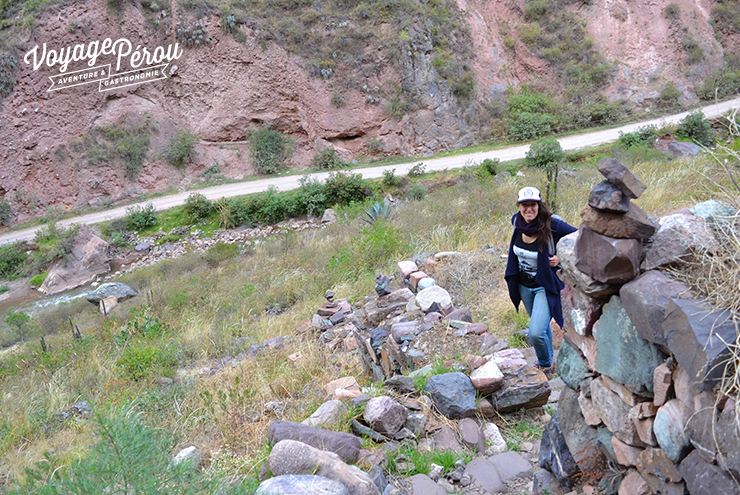
9. Sun Gate (Intipunku)
The route first passes through the quarries, from where the Incas extracted the stones to build the fortress of Ollantaytambo.
The climb to Intipunku takes 2 hours more.
This “sun gate” was a strategic point of astronomical observation and a checkpoint for the routes to Machu Picchu and the Amazon jungle. From here, you can enjoy magnificent views of the surrounding mountains and valley.
You can also take this tour to Inti Punku from Cusco, which includes: transfer from your hotel, breakfast in the community of Pachar, guided hike, packed lunch and even a stop at the microbrewery Cervecería del Valle before returning to your accomodation.
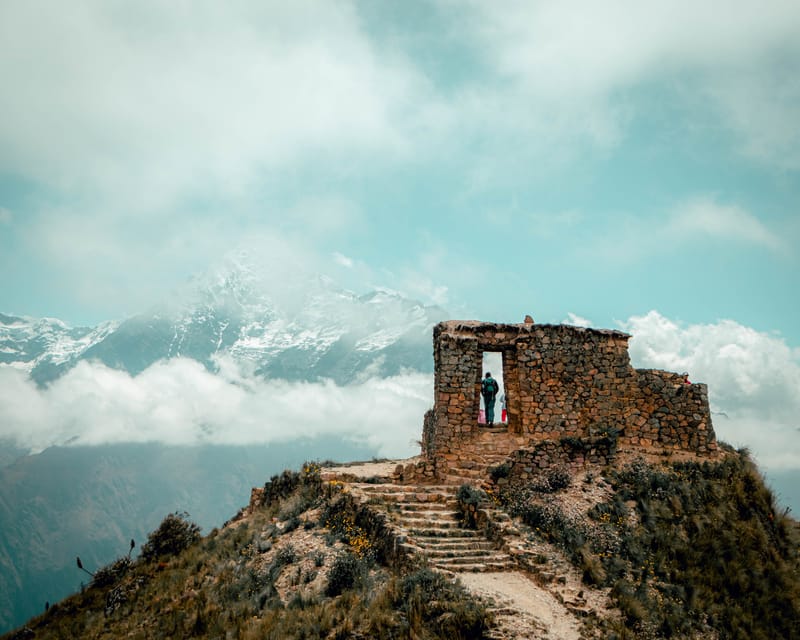
10. Perolniyoc Waterfalls
To reach the village of Socma, take a 30-minute taxi ride from Ollantaytambo (I highly recommend arranging the return trip with the same driver).
From Socma, it’s about a one-hour walk to reach the Perolniyoc Waterfall, a beautiful 100-meter-high cascade in the middle of the countryside.
You can also take the opportunity to visit the ruins of Raqaypata, located about an hour and a half further up the valley. The trail is signposted, and the round-trip back to Socma should take around 2 hours.
The tour includes a guided hike to the Perolniyoc Waterfall and the archaeological site of Raqaypata, plus a lunch prepared with local products in the village of Socma. You can book it here:
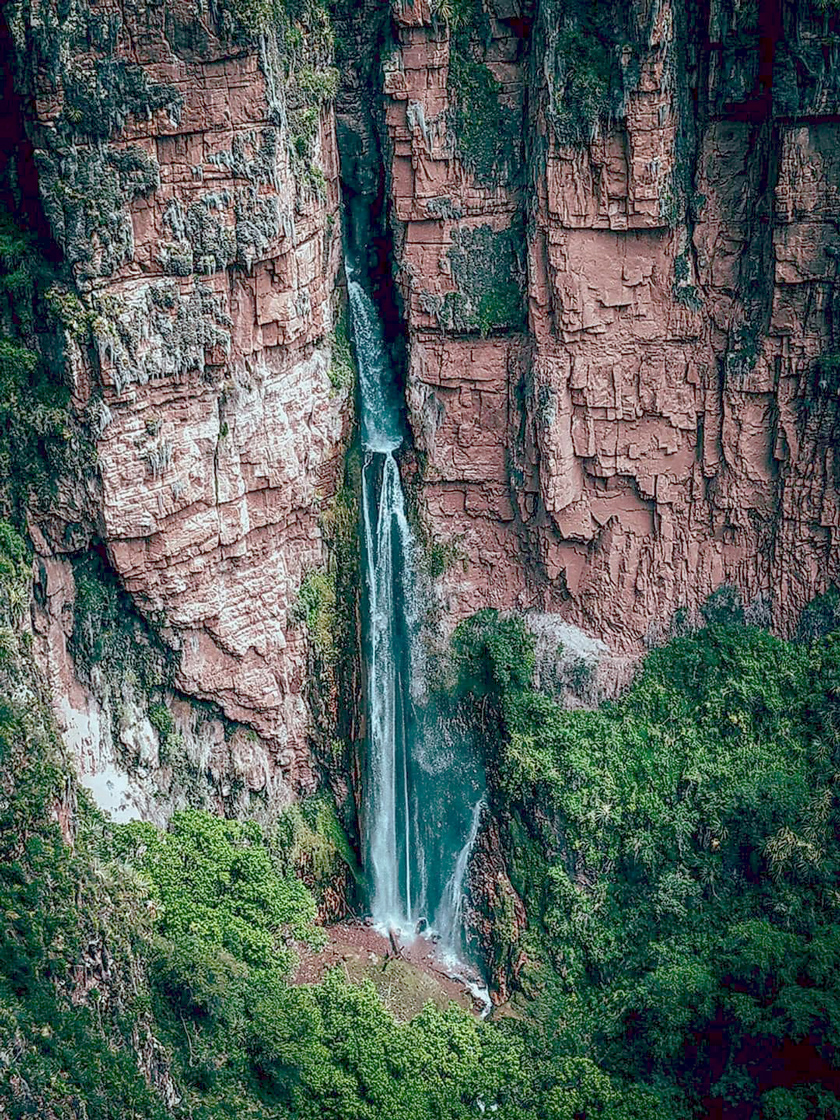
11. Quellorakay
Here is a place off the beaten path of Ollantaytambo, but easily accessible!
This archaeological site, free and little visited, is located south of the village and features agricultural terraces, irrigation canals and various structures.
Although quite small, Quellorakay is a fascinating testimony to Inca ingenuity, and an ideal place to stroll away from the crowds.
How to get to Quellorakay
- From the Ollantaytambo market, head south on Imasumac Street. Just before Hospedaje Killasumaq, take the road to the right and walk for about 10 minutes (it is well signposted)
- From November to March, you will find many fruit trees
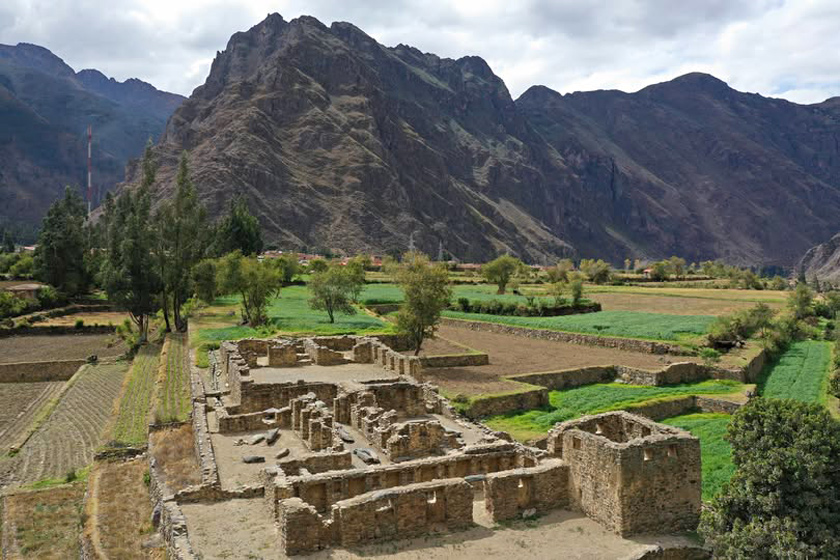
12. The pre-Inca site of Pumamarca
Located about 5 miles north of Ollantaytambo, Pumamarca is an ancient fortified citadel perched on a hill at the confluence of the Patacancha and Yuracmayo rivers.
The site, whose exact origin remains a mystery, is believed to have been built before the arrival of the Incas, perhaps by the Wari or Ayamarca culture.
Its function is also uncertain: Pumamarca may have served as a military fortress to control eastern access to the jungle, but its size and the complexity of its structures also suggest religious or royal uses .
The complex includes chulpas (storage towers), observation posts, a central plaza and several buildings arranged in a grid pattern.
To reach this rather isolated site, you have to walk about 2 hours from Ollantaytambo, through agricultural terraces and Andean villages.
It is an off the beaten path tour, perfect for history buffs who want to enjoy a quiet moment away from tourists.
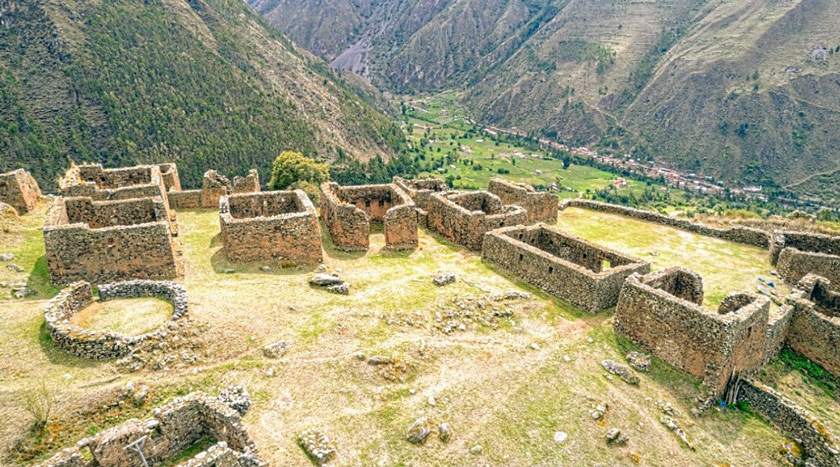
13. Yanacocha Lagoon
Perched at an altitude of 12,960 foot, the Yanacocha Lagoon, or “black lagoon” in Quechua, is a true hidden gem of the Sacred Valley.
Its dark, reflective waters create a spectacular mirror effect, surrounded by a forest of queuñas, typical trees of the Andes, which offer a unique and relaxing environment.
To reach this isolated lake, you will have to plan a demanding 8.5 miles round trip (about 4 h 5 h one way), starting from Hacienda Huayoccari.
The trail, which climbs steadily, is not always well marked, but the effort is amply rewarded by the breathtaking views over the Sacred Valley of the Incas and the charm of the lagoon.
Access is totally free, but this often deserted hike requires good physical condition and adequate preparation.
If you are a hiking enthusiast looking for an experience off the beaten path, the Yanacocha Lagoon is a must-see in Ollantaytambo.
It is not at all in the same region of Peru!
14. Chocomuseo
The ChocoMuseo in Ollantaytambo is not a traditional museum, but a small free space where you can discover the history of Peruvian cocoa and its production process.
There is also a store full of chocolate products (liquors, chocolate bars, etc.) and a small cafeteria where you can enjoy a good hot chocolate.
The most interesting thing here is thechocolate workshop, where you create your own chocolate bar from A to Z, from the grinding of the beans. It is one of the best activities for families in Ollantaytambo!
- Open from 9 am to 5 pm (except Wednesdays, which is closed)
15. Have a Craft Beer
Cervecería del Valle is a microbrewery located at the entrance of the village of Pachar, just a few minutes from Ollantaytambo.
It’s one of the most renowned craft breweries in Peru, with several international awards to its name. Its secret? A passion for innovation, the use of local products, and pure water from the Sacred Valley.
They have a bar where you can taste different beers — I recommend trying the tasting sizes. It’s open on weekends from 2:00 pm. Every last Saturday of the month, they host a big party with barbecue — a local event you shouldn’t miss if you’re in the area!
- How to get to Cervecería del Valle: From the Ollantaytambo market, take a colectivo to Pachar (1 sol per person, less than 10 minutes). Tell the driver “bajo Pachar” or “bajo puente.” The brewery is right next to the road where you get off — impossible to miss.
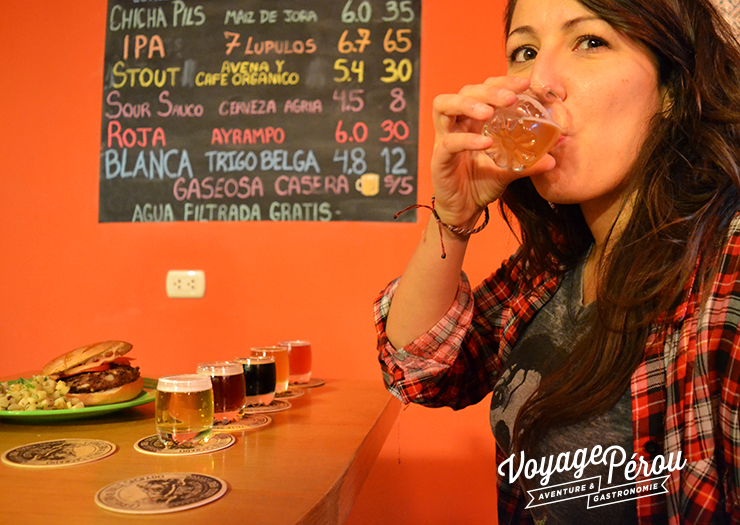
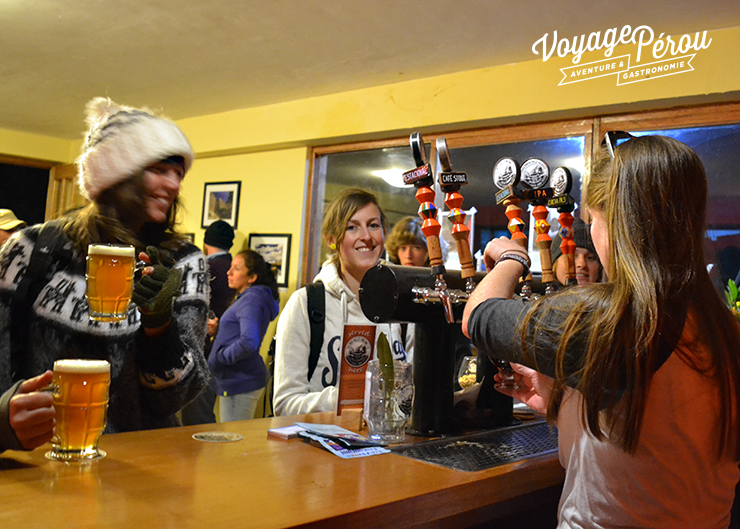
Ollantaytambo and the Other Must-Sees of the Sacred Valley
Ollantaytambo is an excellent starting point to explore the other highlights of the Sacred Valley of the Incas, such as Pisac, Chinchero, Moray, and the Maras Salt Flats.
Each site offers a unique experience, from traditional markets and archaeological sites to spectacular landscapes.
Here’s a suggested itinerary to make the most of your visit to the Sacred Valley:
- Day 1: Start with the ruins and market in Pisac, then continue to Chinchero to discover its textile tradition. — You can also book the tour combining Ollantaytambo, Pisac, and Chinchero here!
- Day 2: Explore Moray and the Maras Salt Flats before heading to Ollantaytambo to visit its ruins and spend the night. — You can book your tour to Maras and Moray here!
- Day 3: Morning departure to Machu Picchu.
Is Ollantaytambo a Good Starting Point for Machu Picchu?
Yes, it is!
How to Get to Machu Picchu from Ollantaytambo
There are two ways to get to Aguas Calientes from Ollantaytambo:
1. By tourist van + walking: Take a van from Ollantaytambo to Hidroelectrica (about 5 hours, arrival around 2:00 pm), then walk about 2.5 hours along the train tracks.
2. By train: Several departures per day, travel time about 1h20 with Inca Rail or Peru Rail. — You can buy your train tickets to Aguas Calientes here!
Once you arrive in Aguas Calientes, you’ll need to take the bus to Machu Picchu — you can buy your bus tickets here!
It includes transportation from your hotel to the train station, train to Aguas Calientes, bus to Machu Picchu, entrance ticket, and guided tour with a certified guide. Get it here:
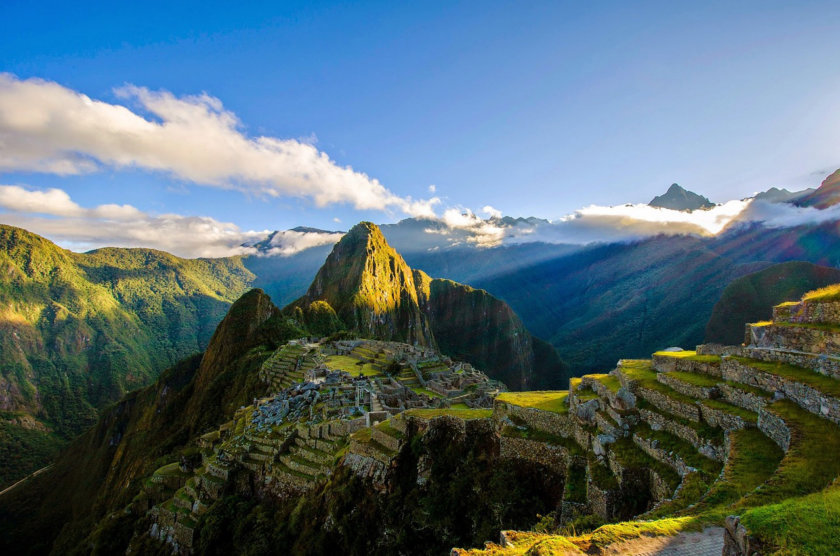
Staying in Ollantaytambo
- Las Portadas: This is the best budget option in Ollantaytambo. A typical local house with a lovely garden and mountain views, just 5 minutes from the main square and 15 minutes from the train station. Rooms from just $23 USD with breakfast included.
- Casa de la Chola: A beautiful room in a charming lodge located just outside of town, about 10 minutes from Ollantaytambo train station. Perfect for nature lovers. From $60 USD per night, with a breakfast that’s a true treat for food lovers.
- Apu Lodge: A lovely hotel with a garden and fantastic views of the mountains and Inca ruins. Very peaceful location, with spacious and comfortable rooms that can host up to 5 people. Friendly staff. Excellent breakfast included. From $93 USD per night!
- El Albergue Ollantaytambo: A countryside-style hotel located right at the Ollantaytambo train station, perfect for catching the early train to Machu Picchu. Comfortable rooms, a beautiful green garden, an organic farm, and a peaceful setting. Onsite you’ll also find an excellent restaurant, a coffee roastery, and a craft distillery. Breakfast included. From $275 USD per night!
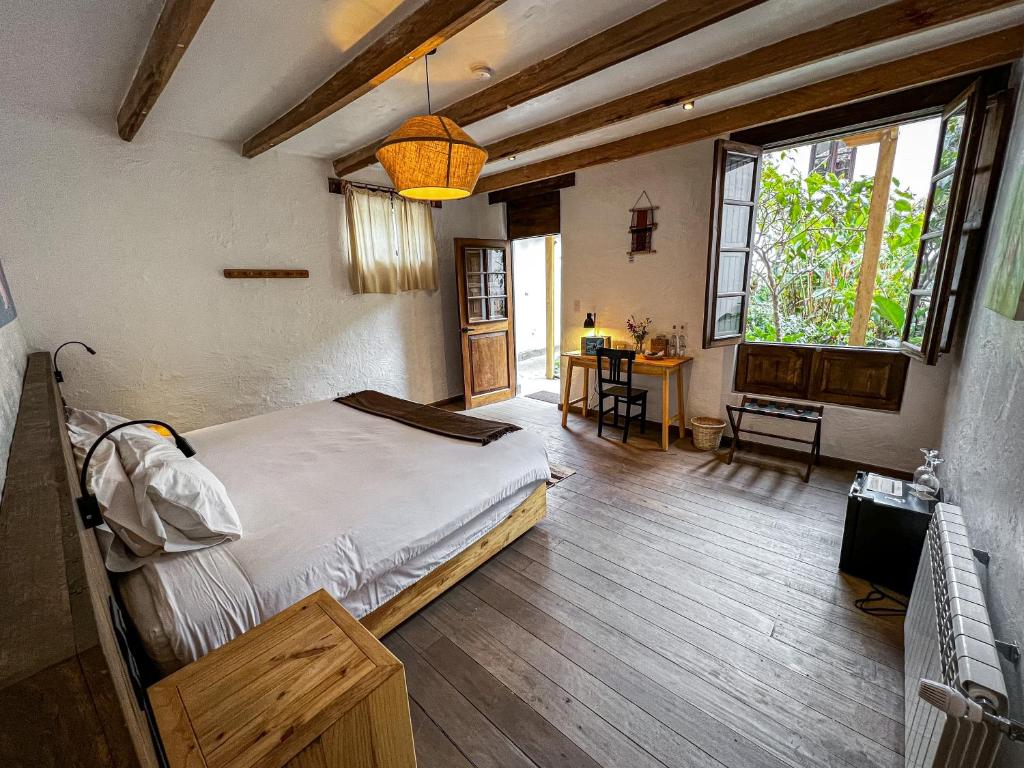
Staying in Cusco
If you prefer to visit Ollantaytambo in one day and sleep in Cusco, here are my recommendations of hotels in Cusco for different budgets:
- Backpacker La Bo’M: One of the best hostels in Cusco. Founded by Sarah, a French expat, it includes a delicious crêperie next door. Perfectly located in the charming neighborhood of San Blas, it offers good Wi-Fi, a cozy vibe, and of course, amazing crêpes to start your day! Dorms from only $13 USD and private rooms from $33 USD.
- La Casona Real Cusco: For those looking for more comfort, this charming traditional-style guesthouse is located on a quiet street just steps from the Plaza de Armas. Impeccably clean, with hot water, great Wi-Fi, and a warm welcome. Breakfast included, all from just $76 USD per night!
- Hotel Tierra Viva Cusco San Blas: In the lovely San Blas neighborhood, this upscale hotel offers spacious rooms with very comfortable beds. Its modern décor with local touches and peaceful interior courtyard make for a relaxing stay. Buffet breakfast included. From $98 USD per night!
- Antigua Casona San Blas: A chic and intimate 4-star hotel in San Blas. It features very comfortable rooms, a warm atmosphere, and a tasteful blend of modern and traditional décor. Don’t miss their Piedra & Sal restaurant, one of Cusco’s best. Excellent breakfast included. From $250 USD per night.
- Palacio del Inka, a Luxury Collection Hotel: For a romantic stay in Cusco, this 5-star gem is housed in a spectacular colonial building across from Coricancha, with roots dating back to Inca times. Enjoy the indoor pool, gym, spa, bar, and restaurant. Delicious breakfast included. From $325 USD per night.
Where to eat in Ollantaytambo
A pleasant establishment in the center of town. It offers lunch and dinner with a local touch in a rustic and familiar atmosphere, perfect to treat yourself when it’s cold!
is a great place to eat on a budget in Ollantaytambo.
Personally, I really like the chuño with cheese or simply the menu of the day (soup, main course and tea) for 7 soles.
This is a small family restaurant, very local, that very few tourists know about.
The menu of the day (soup, main course and drink) costs only 9 soles, and there are also tasty a la carte dishes for about 12-20 soles. The chicken is delicious!
This restaurant, located at the Ollantaytambo train station, is one of the best in town. Try the mushroom and chili pasta (homemade pasta with vegetables), lamb with chimichurri and quinoa with pesto.
Between 16.00 and 18.00, enjoy a 2×1 on pisco sours, chilcano, maracuya sour and piscojito in the adjacent café.
This is the ideal place to try the cuy in Ollantaytambo, prepared with care and cooked slowly in a wood-fired oven.
It is a unique restaurant in a quiet and authentic setting. In addition, the guinea pigs are raised on site, fed organically and served with local accompaniments such as Andean potatoes.
You can hold them in your arms and pet them, with the help of the staff, who are always welcoming.
Needless to say, it is an original experience that children (and even adults) really like.
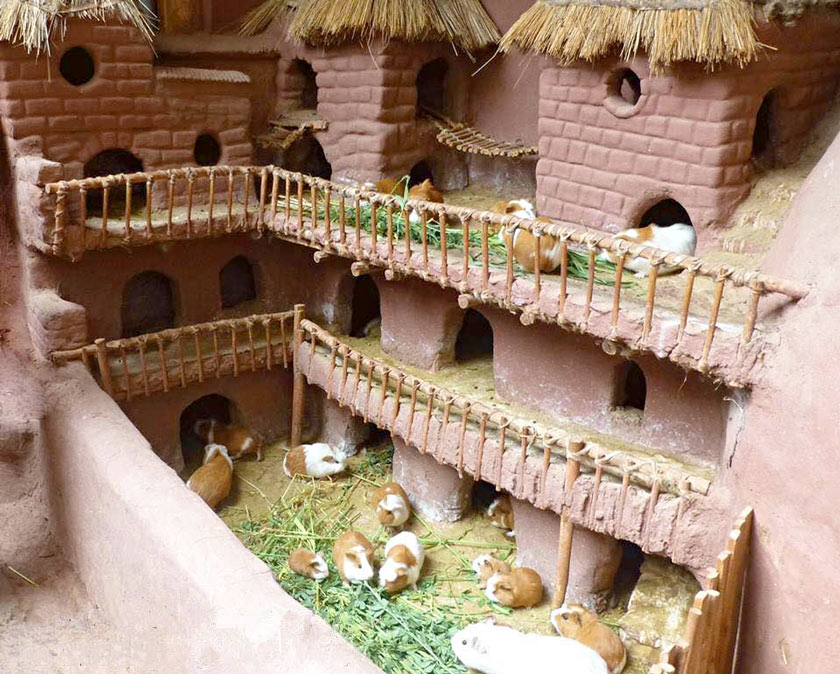
How to get to Ollantaytambo from Cusco
From Cusco you can take a bus on Pavitos street between Belen and Grau avenue (10 soles-15 soles per person, travel time 1 hour and a half).
To return to Cusco from Ollantaytambo, go to the market.
You may not be able to find a bus that goes directly to Cusco. Then you can take a colectivo to Urubamba (1.5 soles/person), and then a colectivo to Cusco (6 soles/person).
If you prefer not to worry about transportation, I suggest you book this one day tour , which includes Pisac, Ollantaytambo and Chinchero, with lunch:
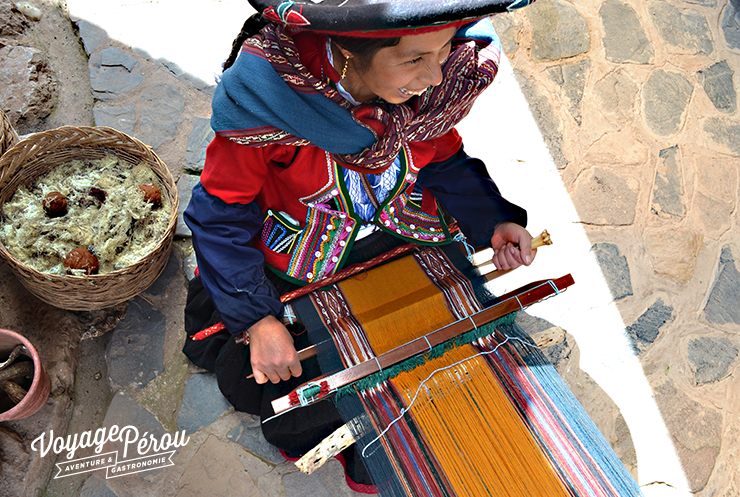
What is the best time to visit Ollantaytambo?
The best time to visit Ollantaytambo is during the dry season, from May to September, when the weather is ideal, with sunny days, pleasant temperatures and easily accessible trails.
If you travel in June, you will be able to attend two important festivities. The Festivity of the Lord of Choquekillka, held in the second week of June, combines dance, music and traditional Andean rites in a vibrant atmosphere.
At the end of June, don’t miss the Ollantay Raymi, a theatrical performance of the “Ollantay Drama” involving 300 actors and dancers. The play tells the love story between the daughter of an Inca and a soldier, staged in the ruins of Ollantaytambo.
I recommend avoiding the rainy season, from November to March, as the rains can make visits difficult. If you choose this period, remember to wear waterproof clothing and appropriate footwear.
Book Your Flight at the Best Price
Planning a trip to Peru? To get the best deal on your flights, I recommend using this flight comparison tool, in partnership with Skyscanner.
It’s the easiest way to find the lowest prices for both international flights and domestic flights within Peru—ensuring you pay the best rate with no hassle!
Rent a Car in Peru
Renting a car is one of the best ways to explore Peru at your own pace and make the most of your trip!
Personally, I always use Booking.com Cars for a few key reasons:
- Easily compare prices from all major rental agencies in one place—finding the best deal has never been easier!
- Free cancellation on most bookings, so you can reserve with peace of mind.
- Better insurance coverage at a lower price than rental companies—saving you money with no extra effort.
Click the button below to find the best car rental deals in Peru:
Rent a car
Book entrance tickets and guided visits
Take a travel insurance
Book a tour
✈️ Book your flight
Traveling to Peru? These articles will help you!
Discover all my articles about Peru: All my tips and itineraries to plan your trip in one place!
40 EPIC Things to Do in Peru (+ My Best Tips)
- Machu Picchu: Tickets, Circuits, and Top Tips to Plan Your Visit
- Aguas Calientes (Machu Picchu Pueblo): Tips, Hotels, and What to Do
- Huayna Picchu vs. Machu Picchu Mountain: Which Hike is Best?
- Inca Trail: The Definitive Guide to the Classic Trek to Machu Picchu
- Salkantay Trek: A Complete Guide to the Best Inca Trail Alternative
- Inca Jungle Trail (Machu Picchu): What to Expect + My Experience
- Lares Trek to Machu Picchu: 4-Day Itinerary & Guide
- 30 Epic things to do in Cusco (+Tips)
- One day in Cusco: The Perfect Itinerary (1st time visit)
- 2 or 3 Days in Cusco: The Perfect Itinerary for First-Time Visitors
- 19 Free Things to Do in Cusco + My Best Tips
- How to Get to Cusco: Best Transport Options Compared
- Cusco Tourist Ticket Guide: Prices, Sites, and How It Works
- How to Visit the Inca Ruins of Cusco: Sacsayhuamán, Tambomachay, and More
- Sacred Valley: 23 Best Places to Visit (+Where to Stay)
- Pisac: The 12 Best Places to Visit (+ Tips)
- Maras and Moray: How to Get There, Entrance Fees, and Tips
- Urubamba: The Best 10 Places to Visit
- Laguna Humantay (Cusco): How to Get There, What to Expect, and Tips
- How to Visit Rainbow Mountain from Cusco: Hike, Tours & Tips
- Itinerary: 5-6 days in Peru – Lima, Arequipa, Colca Canyon, Cusco, Sacred Valley and Machu Picchu
- Itinerary: 7-8 days in Peru – See the maximum in one week
- Itinerary: 10 days in Peru – The ideal itinerary for a short stay in Peru
- Itinerary: 2 weeks in Peru – The classic route
- Itinerary: 15 days in Peru – An itinerary that includes northern Peru
- Itinerary: 3 weeks in Peru
- Itinerary: 3 weeks in Peru + Bolivia – The best itinerary for visiting both countries
- Itinerary: 1 month in Peru – What to see and do in 30-31 days
You’re using Pinterest? Here is the picture to pin!
